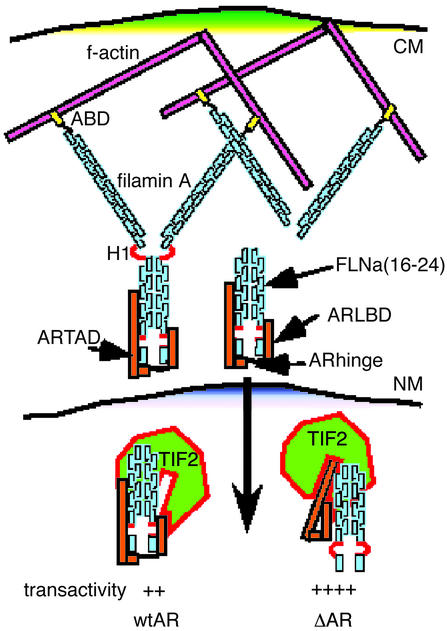Figure 5.
Model of FLNa/TIF2-mediated AR transcription. Dimeric FLNa (blue), in the cytoplasm, binds the f-actin cytoskeleton (pink) orthogonally through its N-terminal actin-binding domain (ABD, yellow). AR (orange bars) interacts with the C-terminal end of FLNa through the AR hinge (black loop) and the ARLBD. Cleavage of FLNa at H1 (red loop) releases FLNa(16–24), which colocalizes with the AR into the nucleus. Here, FLNa(16–24) and TIF2 (green) compete for binding to the ARLBD and AR hinge. When the N-terminal subdomain of the AR hinge region is deleted (ΔAR), one of the binding sites for FLNa(16–24) is lost, leading to enhanced TIF2 binding and improved TAD–LBD interactions and consequently increased AR transactivity. CM, NM, cytoplasmic and nuclear membranes.

